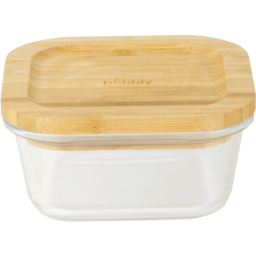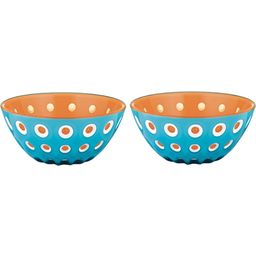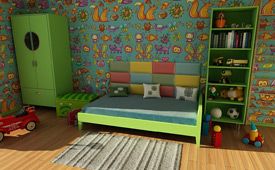Tips for setting up children's rooms
Setting up a nursery is not as easy as it sounds. Here are a few basic tips for doing so.
Children's rooms are sleeping rooms and living rooms at the same time. Since children's rooms fulfil multiple functions, they are also furnished differently than rooms for adults, where the bedroom usually does not double as a living room. It's a challenge to make a nursery both appealing and practical at the same time.
Properly set up wants to be learned
In contrast to the past, today there is a real land of milk and honey in terms of furniture and variety. There are countless child-friendly furniture variants, wallpapers, lamps ... With this large selection, creative parents are at the heart. At the same time, one should never lose sight of one thing: the safety of the little ones.
Safety is the top priority
Of course, all parents only want the best for their child. For this reason, you should always make sure that the nursery is really safe. That starts with the materials. With quality seals and test marks, they can check whether different materials (such as paint colours) are safe and harmless for your little ones. The decoration in the nursery should also be tested for harmful substances.
The next point: what about corners, edges and handles? Are they rounded or pointed? The latter is a problem, because injuries happen faster than you think.
The stability of furniture is also to be considered. Children like to climb around with increasing age so it would be unacceptable if something was not attached securely. Furniture in children's rooms must also not tip over.
Of course, socket covers, non-slip carpets etc. are also a good idea.
Furniture that grows with you
Children grow incredibly fast. No sooner have you bought a new pair of pants, it is already too small. What is still tolerable in garments, runs out quickly when we talk about large investments. This problem has been addressed by many children's furniture manufacturers, such as Flexa, for example, by producing furniture that grows with your child. With a few simple steps, the furniture adapts to the size of the child.
Lighting
The right light is important in every room in the house, including the nursery. It is best to choose lamps that emit warm light. Ceiling washlights or several small lamps are well suited for this, but the use of fairy lights can also have a lot of effect.
Colours and stickers
The colour scheme in children's rooms is very important, because children love colours. Since there is almost any colour available today for furniture, the choice is not easy. If the children are already at the right age, you can let them decide for themselves (between several previously chosen alternatives).
In addition to a wall paint, wall stickers can make children's stay in their room more beautiful. The nice thing about wall stickers is that you can easily replace them with new ones if the kids do not like the old ones anymore. It is a great idea to let the children glue them to the walls themselves.
Classification system
In children's rooms, the chaos reigns, because tidying up is boring. Then you need a classification system. The simpler this is, the better it works. Optimally, you use storage boxes. These offer a lot of space and you can easily establish an order system. Certain toys come in a specific box. This not only speeds up the cleaning, but also the recovery and ordering of the toys.
Play area
Speaking of storage boxes: these are best placed in the designated games corner. This is a free corner of the room where children can play as they wish. The corner should have soft carpeting and create a natural separation of play and duty (if school assignments are on the daily schedule).
Latest reviews
-
 5.0 (1)
5.0 (1)Vejibag Vejibag Standard
- Made of undyed organic cotton
- Keeps vegetables fresh for a long time
- Size: 27.94 x 30.48 cm
£21.50Delivery by April 29
-
 3.5 (2)
3.5 (2)guzzini Tiffany Cake Stand with Dome, large, Transparent
- Transparent
- White
- Elegant shatter-proof clear dome
- High-quality acrylic
- Dimensions: Ø 36 cm, H: 28 cm
£58.00Delivery by April 29
-
 5.0 (1)
5.0 (1)Pebbly Square Glass Container with Bamboo Lid, 0.52 litres
-10% Bestseller- Made from durable borosilicate glass
- Stackable & space-saving
- Airtight seal
£8.24 £9.16Delivery by April 29
-
 5.0 (2)
5.0 (2)guzzini Set of 2 Bowls Ø12cm LE MURRINE, Blue / White / Orange
Bestseller- Blue / White / Orange
- Grey / Yellow
- Black / White / Red
- Red / White / Transparent
- Sand / White / Moss Green
- +3
- Attractive glass look
- Made of high-quality plastic
- Volume: 300 ml each
£25.00Delivery by April 29
Magazine Articles:
Discover Interismo:
-
Free delivery in Great Britain
from £59.90 -
Free
returns -
We operate in a
climate-conscious manner. More than 7.850 products

